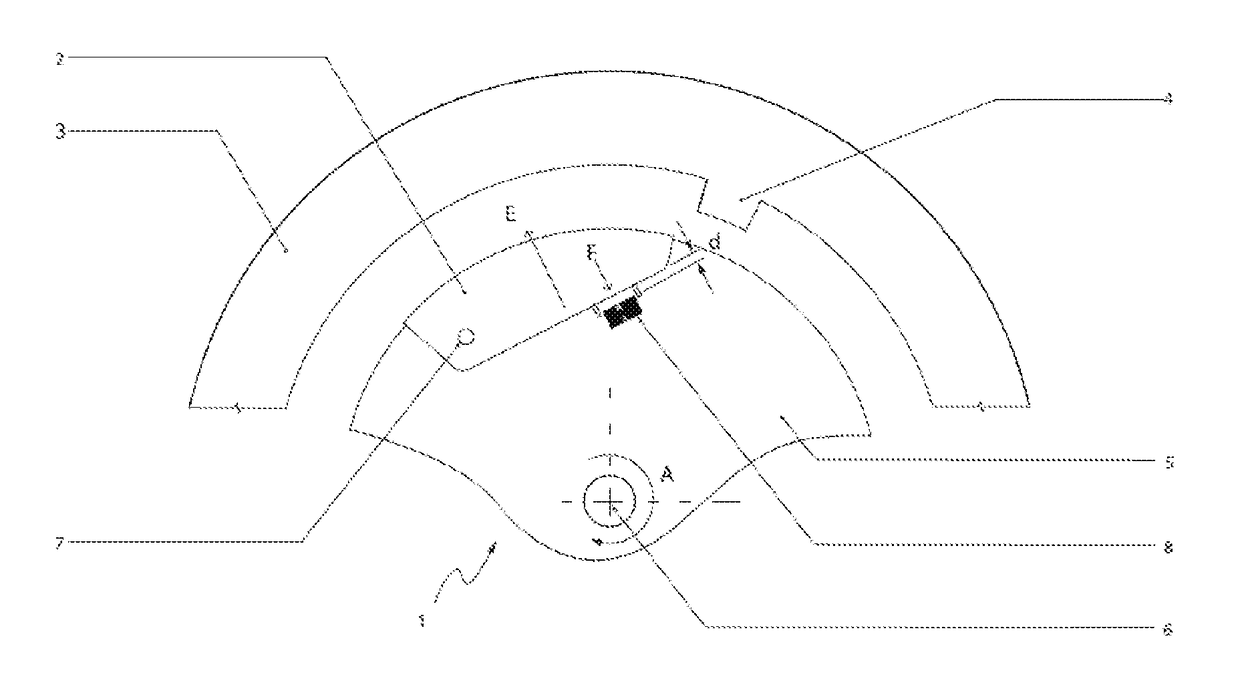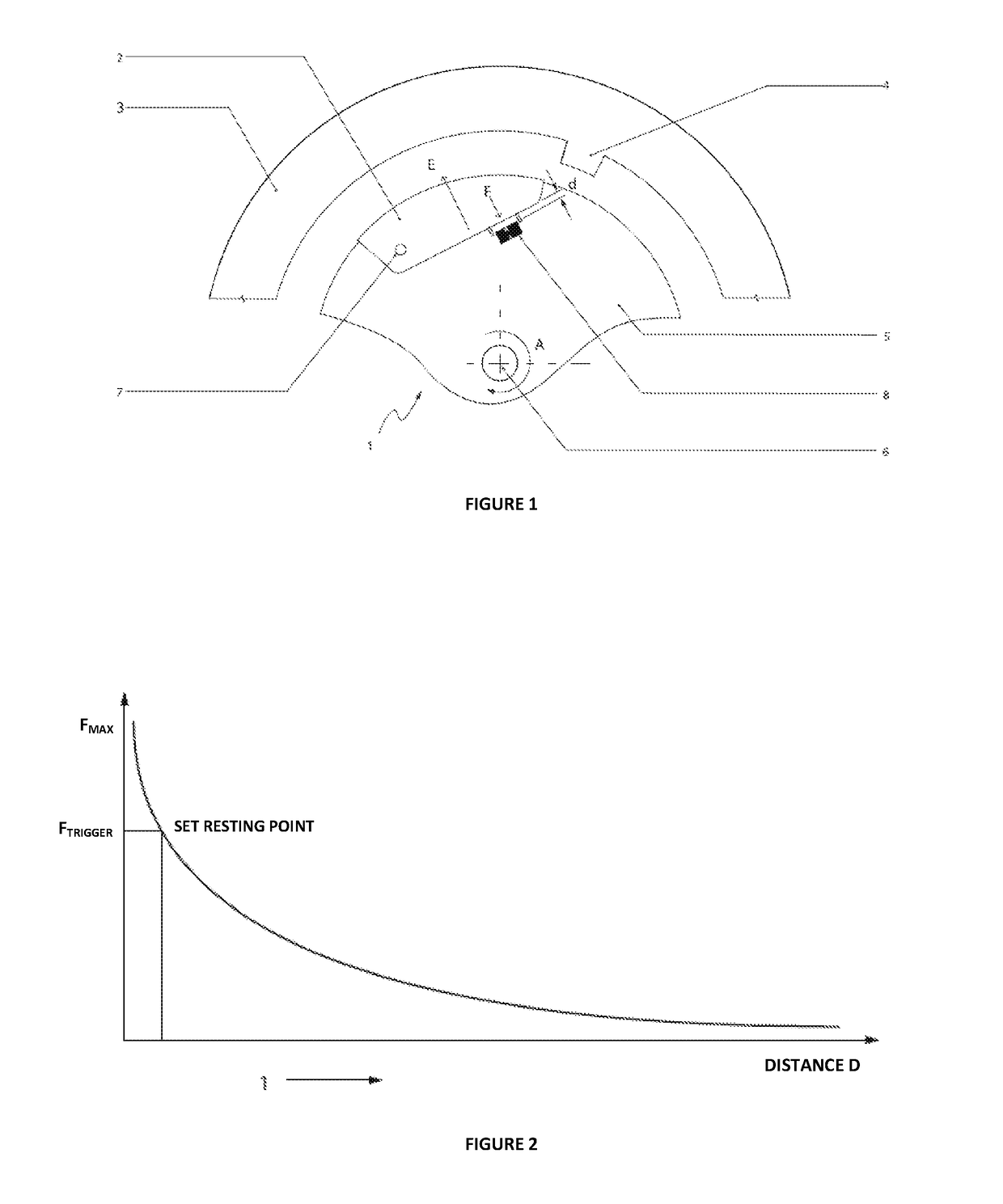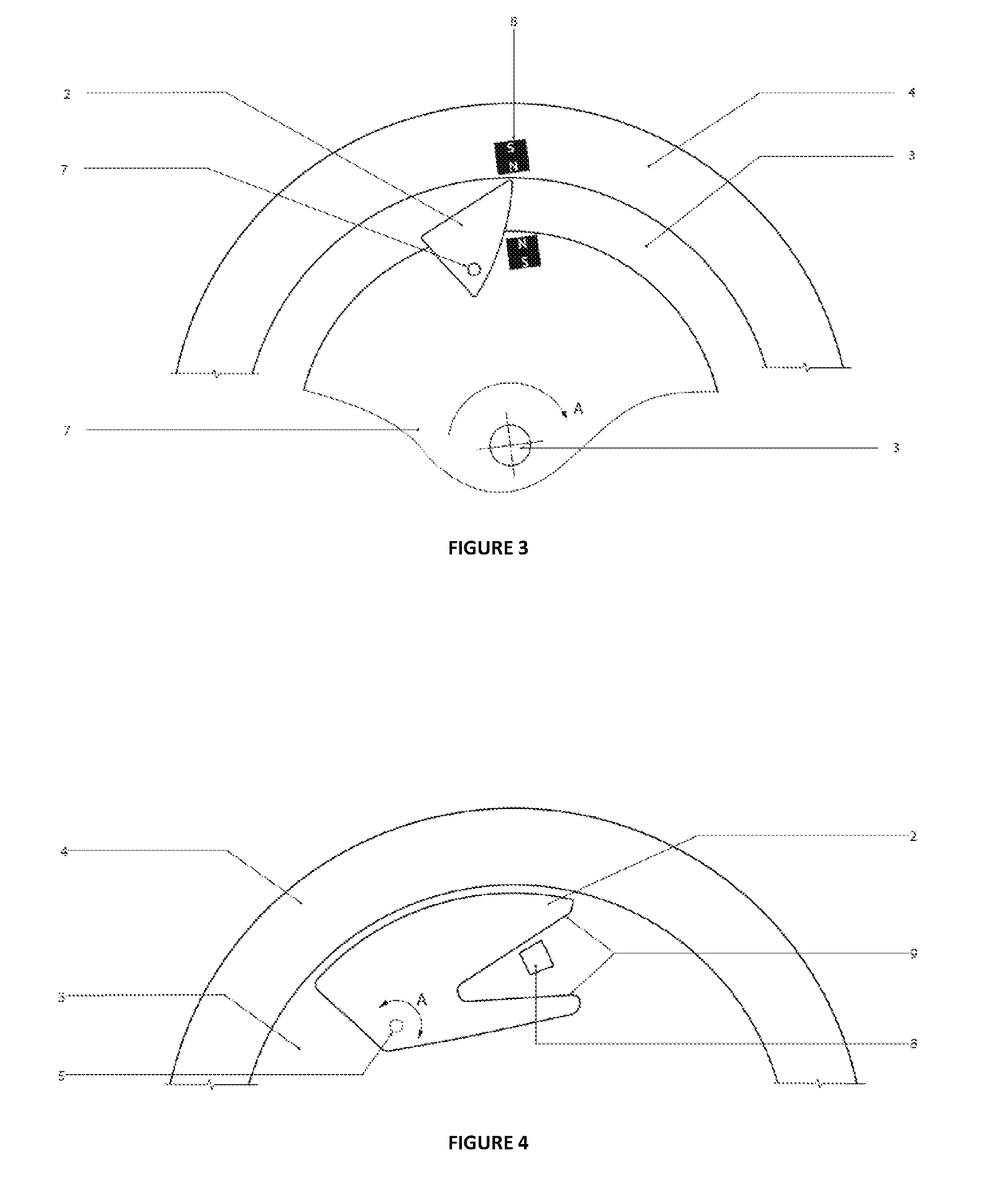Tuning of a kinematic relationship between members
a kinematic relationship and member technology, applied in the direction of asynchronous induction clutches/brakes, electric devices, transportation and packaging, etc., can solve the problem of asynchronous on-off switching of the braking effect, chatter becomes a hindrance, and chatter is particularly undesirable in some applications
- Summary
- Abstract
- Description
- Claims
- Application Information
AI Technical Summary
Benefits of technology
Problems solved by technology
Method used
Image
Examples
working examples
[0133]The above described device is now described by reference to specific examples.
[0134]For ease of description in the examples, only a single first member is typically shown although it should be appreciated that multiple first members may be used.
[0135]A magnetic field through which the first member(s) move and third or latching member are generally shown for prolixity as continuous regions. The magnetic field, (if present at all) may for example be a series of discrete magnets or even just one magnet. Similarly, the third member (if present) may take on various shapes or surface contours, with only a limited number of examples shown for clarity.
[0136]While certain movement, for example of the first member(s) may be shown in an example, it should be appreciated that the magnetic field if present, the second member and / or the third member(s) may also move or even the first member remain fixed while the other member(s) move.
example 1
[0137]As illustrated by the schematic of FIG. 1, the device 1 in the embodiment shown comprises a first member 2 moving relative to a second member 5, in this example shown as being a rotor that rotates about rotor axis 6 in direction A. A third member 4 is also shown.
[0138]The first member 2 as shown is attached to the second member 5 and a kinematic relationship exists between the parts constrained by the first member pivot axis 7, the location of the third member 4 and the speed of rotation of the second member 5.
[0139]A magnetically induced force is in place between the first member 2 and the second member 5 via a magnet or magnets 8, in the Figure shown as being a block shape and linked to the second member 5. The first member 2 includes a portion 9 or as a whole is magnetically attracted to the magnet 8. The magnetically induced force prevents relative movement between the first member 2 and second member 5 until a threshold force F is exceeded by an energizing force E. In the...
example 2
[0142]FIG. 3 illustrates an addition to the device of Example 1. In this example, a third member 4 is added, the third member 4 applying a magnetically induced force on the first member 2 thereby further changing the kinematic relationship between the various members 2, 4, 5. In the embodiment shown, a magnet is placed on the third member 4 that attracts a portion 9 or all of the first member 2. The induced force to the third member 4 is not sufficiently strong enough to overcome the induced force between the first member 2 and second member 5 until sufficient energizing force is applied (e.g., via rotation of the second member 5 about axis 6) to overcome the threshold force. When movement of the first member 2 starts to occur, the magnet on the third member 4 may then urge motion of the first member 2 to the third member 4. The magnet 10 on the third member 4 may also provide sufficient force to hold the first member 2 against the third member 4. A magnetic field 3 may lie adjacent...
PUM
 Login to View More
Login to View More Abstract
Description
Claims
Application Information
 Login to View More
Login to View More - R&D
- Intellectual Property
- Life Sciences
- Materials
- Tech Scout
- Unparalleled Data Quality
- Higher Quality Content
- 60% Fewer Hallucinations
Browse by: Latest US Patents, China's latest patents, Technical Efficacy Thesaurus, Application Domain, Technology Topic, Popular Technical Reports.
© 2025 PatSnap. All rights reserved.Legal|Privacy policy|Modern Slavery Act Transparency Statement|Sitemap|About US| Contact US: help@patsnap.com



